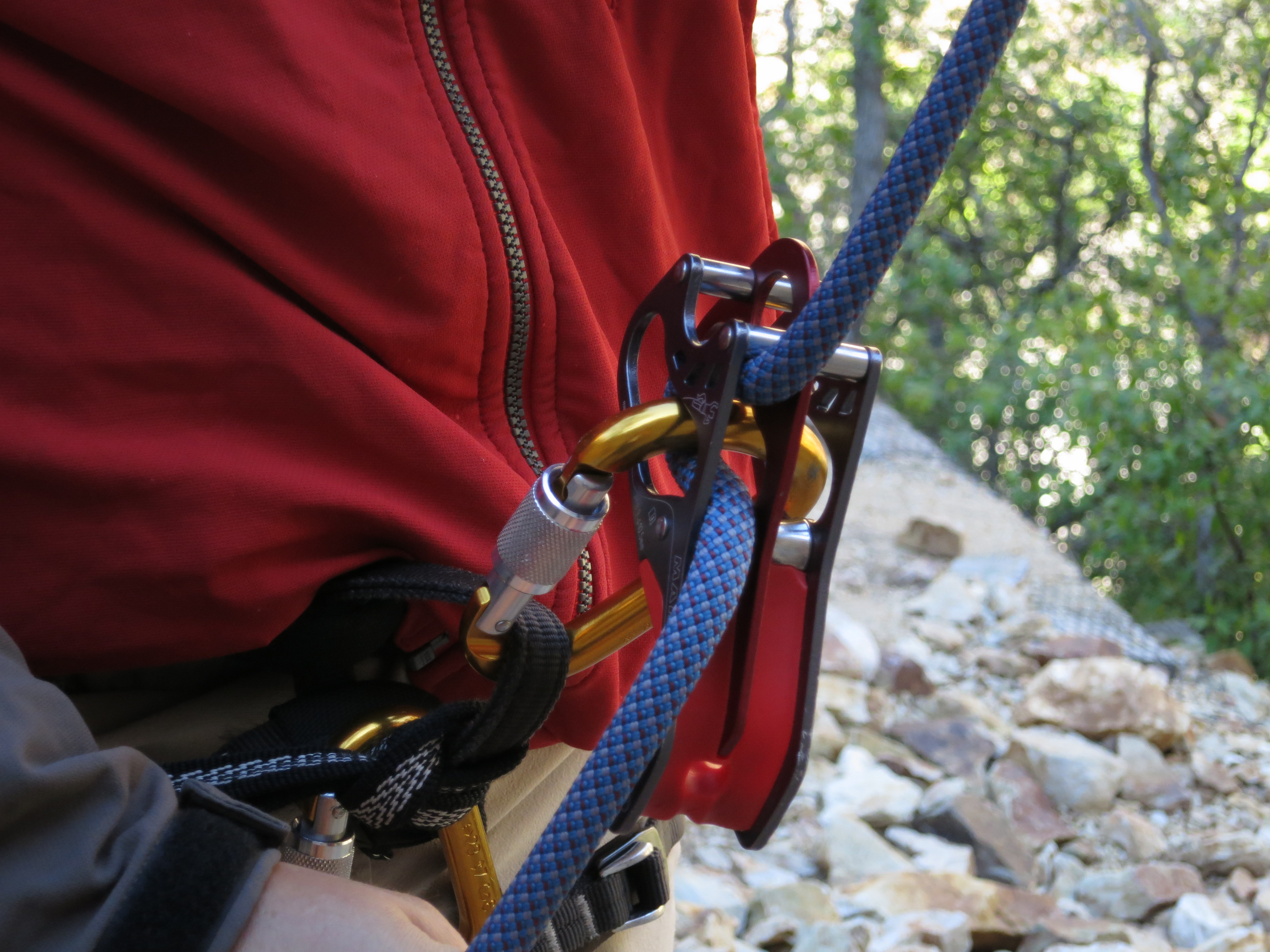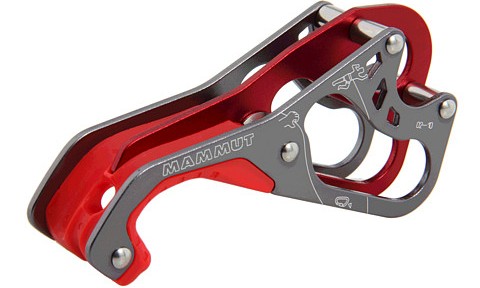
Mammut Smart Alpine Belay/Rappel Device
4.4 ounces
I’ve been using the Mammut Smart Alpine device for several months now. It has become my favorite belay/rappel device. Its primary defining feature is that it is an autoblocking device, much like the well-known Gri Gri. It isn’t guaranteed to hold a fall without help from the belayer, but it is designed to automatically lock up when holding a fall, giving it a larger safety margin than a typical tube device like the ATC or Reverso.
The autolocking feature can be engaged when belaying and also while rappelling. The rappel autolock feature is particularly useful, and I’ve used it on numerous occasions to hold myself locked off (hands-free) when I was dealing with snagged or tangled ropes or other two-handed chores while on rappel. Even through the instructions say to always use a prussik, I’m comfortable enough with the security of the Smart Alpine autolock feature that I’ve pretty much stopped using a prussik back-up when I am rappelling.
The trade-off for the autolocking feature is that the Smart Alpine isn’t quite as smooth as an ATC or Reverso when rappelling or when paying out rope for the leader. Particularly at first, when I was getting used to the new device, it would sometimes be a bit jerky on rappel, and would sometimes lock up unintentionally when I was paying out rope for the leader. If the leader is moving really really fast (like walking quickly over easy ground,) it can sometimes be hard to feed rope quickly enough to keep up. Most of the time, it’s not an issue, but now and then, I find myself “short roping” the leader because the device is locking up. .
If you don’t want or need the autoblock feature on rappel, you can set up the device to act like a traditional rappel device without the autoblock. I have rappelled in non-autoblock mode on occasion, and it was very smooth and easily controllable. You can also rig the Smart Alpine in “guide mode” to belay one or two seconds similar to the function of an ATC, Reverso, or Kong GIGI plaquette. Like every other “guide mode” devices I’ve used, lowering a second in guide mode is a real pain.
Instructions for using the Smart Alpine can be found HERE. The Smart Alpine comes in two sizes: A silver colored device for smaller (7.5-9.5mm) ropes, and a gunmetal grey colored device for larger (8.9-10.5mm) ropes. In use, I’ve found that I prefer to use the smaller device if the rope is between sizes. (For example, the smaller device works best with an 8.9mm single rope.)
The Smart Alpine is a heavier than an ATC or Reverso, but I really like the additional safety that the autolocking feature provides. As a belayer, you try to always be ready for the big fall and big catch, but the autoblock gives you a bit of a back up just in case you screw it up. When fatigue sets in at the end of a long alpine day, it’s good to have that extra assist from your belay device.
